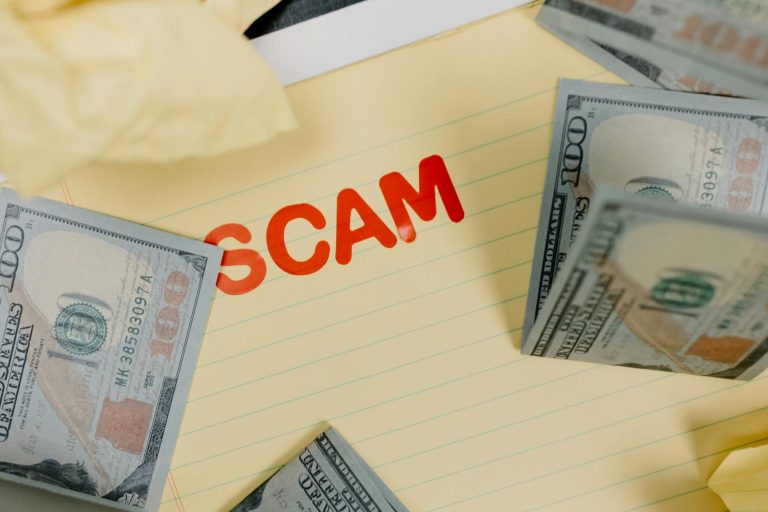
Spotting Fake Discounts
The Trickery Behind Discounts
Ever seen a “sale” that seemed too good to be true? You might’ve stumbled upon a fake discount. These so-called deals, often dubbed phantom markdowns, are designed to trick you into thinking you’re getting a steal. Here’s the lowdown: retailers jack up the original price, then slap on a “discount” to make it look like you’re saving big. But guess what? That original price might be pure fiction.
| Price Scenario | Original Price | Discounted Price | Perceived Savings |
|---|---|---|---|
| Scenario 1 | $100 | $80 | $20 |
| Scenario 2 | $120 | $80 | $40 |
| Scenario 3 | $90 | $70 | $20 |
Check out this table. It shows how changing the original price can mess with your head, making you think you’re getting a better deal than you are. Retailers love this trick because it gives you that rush of scoring a bargain. It’s especially common with big-ticket items like engagement rings or cars, where sellers might claim they’re giving you a special deal through “connections” or “low margins” (Harvard Business Review).
The Mind Games of Discount Shopping
Let’s talk about why we fall for these fake discounts. When you see a lower price next to a higher one, your brain goes into overdrive. You feel like you have to act fast to snag the deal, even if it’s not really a deal. This emotional reaction can make you buy things on impulse.
Retailers know this and use it to their advantage. They’ll show you a “recommended retail price” next to their “discounted” price to make the deal look even sweeter. Just seeing that price drop can make you want to buy, as shown in this table:
| Original Price | Discounted Price | Emotional Response |
|---|---|---|
| $150 | $100 | Excitement and urgency |
| $80 | $60 | Sense of accomplishment |
| $200 | $150 | Perceived luxury at a bargain |
This table shows how the original price can mess with your emotions, making you more likely to buy based on what you think you’re saving, not what you actually are. Knowing these tricks can help you see through the fake discounts and make smarter choices. Want to get better at spotting these scams? Check out our guide on spotting fake discounts.
Spotting Fake Discounts
Shopping for deals can be a minefield, especially with sneaky fake discounts lurking around. These tricks can make you think you’re saving big bucks when you’re not. Let’s break down two common ways stores pull the wool over your eyes.
Phantom Markdowns
Ever heard of phantom markdowns? It’s when stores jack up the price of an item, then slap on a “discount” to make it seem like a steal. Imagine a jacket that usually sells for $50. The store hikes it up to $80, then “discounts” it to $60. You think you’re getting a $20 discount, but really, you’re paying $10 more than the original price. Sneaky, right?
| Original Price | Inflated Price | “Discounted” Price | Fake Savings |
|---|---|---|---|
| $50 | $80 | $60 | $20 (25% off) |
See how it works? The so-called savings are just smoke and mirrors. Always check the original price before you fall for these tricks.
Deceptive Pricing Tactics
Another trick in the book is messing with reference prices. Stores might say a product was sold for more elsewhere or show a suggested retail price to make their price look better. For example, they might claim a gadget was “sold elsewhere for $20,” and now it’s $15. Sounds like a deal, but is it really?
| Comparison Price | Advertised Price | Discounted Price | Real Savings |
|---|---|---|---|
| $20 | $15 | $15 | $5 (25% off) |
In this case, the $20 comparison might be bogus. The product might never have sold for that price. It’s all about making you think you’re getting a bargain when you’re not.
To dodge these scams, always do a bit of homework. Check the original prices and compare them across different stores. Don’t let flashy discounts fool you. For more tips on spotting fake discounts, check out our guide on spotting fake discounts. Stay sharp and shop smart!
Reacting to Fake Discounts
Getting duped by fake discounts is a real bummer. But don’t worry, there are ways to fight back and make sure it doesn’t happen again.
Taking Legal Action
Think you’ve been tricked by a fake discount? You can take legal action. Start by keeping all your receipts, ads, and any emails or messages from the seller. This stuff can be super important if you need to take things further.
You can file a complaint with the Federal Trade Commission (FTC). They have rules that say a product can only be advertised as being on sale if it was actually sold at the higher price for a good amount of time.
If you find out that others have been scammed too, think about joining a class-action lawsuit. It’s a way to team up with other people and get some justice together.
| What to Do | How to Do It |
|---|---|
| Keep Records | Save all ads, receipts, and emails. |
| File a Complaint | Report it to the FTC. |
| Ask for a Refund | Request the price difference. |
| Join Class-Action | Team up with others for a stronger case. |
Consumer Protection Laws
Consumer protection laws can be different depending on where you live, but many places have rules against misleading sales tactics. For example, in California, if a store says something is on sale, they must have sold it at the original price within the last three months (LinkedIn). If they don’t, they could get into legal trouble.
Some states also have rules about how long something can be on sale before it has to go back to its regular price. It’s illegal to say something is discounted if it was never really sold at the higher price. But, sometimes these laws aren’t enforced very well (NBC News).
Also, the Consumer Review Fairness Act protects you from companies that try to punish you for leaving honest reviews. So, you can share your experience about fake discounts without worrying about getting in trouble.
Knowing your rights and the legal options available can help you fight back against fake discounts. For more tips on spotting these scams, check out our articles on false discounts and discount scams.
Examples of Fake Discounts
Ever felt like you scored a great deal, only to find out later you got played? Let’s break down how some retailers trick you into thinking you’re getting a bargain when you’re not.
Case Studies
Recent investigations have shown how big-name stores use sneaky pricing tricks. The Center for the Study of Services tracked prices at national chains over 44 weeks. They found that stores like Sears, Kohl’s, and Macy’s often run “sales” that are anything but. The so-called “discounted” prices were often just the regular prices, fooling customers into thinking they were getting a steal (NBC News).
| Store | Price Shenanigans | Findings |
|---|---|---|
| Sears | Constant sales on certain items | Regular prices dressed up as discounts |
| Kohl’s | Frequent “sales” that revert to original prices | Misleading customers about real savings |
| Macy’s | Fake sale prices | Prices often not better than other stores |
Perpetual Sales Tactics
Retailers love to pull the wool over your eyes, especially during the holidays. They advertise discounts of 30%, 40%, or even 50% off, but these “discounts” often just bring prices back to their regular levels. Some stores have even faced legal trouble for these misleading practices.
These tactics can leave you scratching your head, trying to figure out if you’re really saving money. It’s crucial to stay sharp and not fall for these discount scams. For more tips on spotting fake deals, check out our article on spotting fake discounts.
| Tactic | Description | Consequences |
|---|---|---|
| Rollback pricing | Prices go back to original after “sales” | Legal trouble for false advertising |
| Seasonal promotions | Misleading discounts during holidays | Confuses consumers about real savings |
By knowing these tricks, you can shop smarter and avoid getting duped by fake discounts. Want to dive deeper? Read our articles on false discounts and discount fraud.
Dodging Fake Discounts
Smart Shopping
Don’t get tricked by fake discounts. The trick is to compare prices across different stores over time. Sometimes, those “amazing” sale prices are just smoke and mirrors. Big names like Sears, Kohl’s, and Macy’s have been caught making discounts look deeper than they really are.
Here’s a handy table to help you compare:
| Store Name | Regular Price | Sale Price | Discount Percentage |
|---|---|---|---|
| Store A | $100 | $70 | 30% |
| Store B | $100 | $80 | 20% |
| Store C | $100 | $75 | 25% |
Keep an eye on prices regularly. If a deal seems too good to be true, it probably is.
Tips to Stay Sharp
Knowing the tricks retailers use can save you from falling for fake discounts. Here are some tips to keep you sharp:
Do Your Homework: Check prices online before buying. Websites that track price history can show if a sale price is really a deal or just a trick.
Know the Law: Some states have rules about how long an item can be on sale. In California, for example, a product must have been sold at the original price within the last three months if a higher original price is advertised alongside a sale price (LinkedIn).
Watch Out for Tricks: Especially during the holidays, retailers might use sneaky pricing tactics. Discounts of 30%, 40%, or even 50% might just bring prices back to where they started. Some stores have even faced legal trouble for this (Washington Post).
Use Price Trackers: Online tools and apps can track the prices of items you want, alerting you to changes over time.
By following these tips, you’ll be better at spotting and avoiding fake discounts and discount scams, making smarter choices when you shop.
Ethical Considerations
Grasping the ethical side of discount practices is a must for both shoppers and businesses. It’s about fair pricing and sticking to the rules.
Pricing Strategies
Fair pricing builds trust between buyers and sellers. Companies should steer clear of tricks that lead to fake discounts. Being upfront about prices is key. Discounts should show real savings, not be puffed up. Honest pricing helps businesses build lasting customer relationships.
A sneaky trick is “phantom markdowns,” where the original price is jacked up to fake a big discount. This can wreck consumer trust and tarnish a brand’s image. Instead, businesses should use pricing that truly reflects value, making sure any discounts are real and based on the product’s true worth.
Compliance with Regulations
Following the rules is another big part of ethical discount practices. The Federal Trade Commission (FTC) has rules against fake pricing. They say a product can only be advertised as discounted if the old price was actually offered to the public for a good chunk of time. Different states have their own rules about how long an item can stay on sale before going back to its regular price.
Take California, for example. The law there says a company must have sold a product at the original price within the last three months if they want to show a higher original price next to a sale price. Breaking these rules can lead to legal trouble (LinkedIn). Also, in many states, it’s illegal to claim discounts on items that were rarely sold at the higher price.
Besides pricing rules, the Consumer Review Fairness Act stops companies from punishing people for posting honest reviews. This law highlights the need for transparency and accountability in business.
By sticking to fair pricing and following the rules, you can dodge discount scams and fake deals. Knowing these points helps you make smart buying choices and hold businesses accountable. For more tips on spotting fake discounts, check out our guide on spotting fake discounts.







this is really insightful, especially about those ‘phantom markdowns’. it’s crazy how they manipulate us into thinking we’re getting a bargain.
I always wondered how they get away with these fake discounts now I know This is a real eyeopener Thanks for sharing
This is SO helpful! I’ve been falling for these fake discounts for ages. Now I know what to look out for. Thanks for the heads up!
This is a great article, but I think the author missed a few points about how retailers use psychological tricks to make us spend more. I’d love to see more about that.
Good info, but tbh, I’m still gonna buy stuff even if it’s a fake discount. I’m a sucker for a good deal, even if it’s a little misleading.